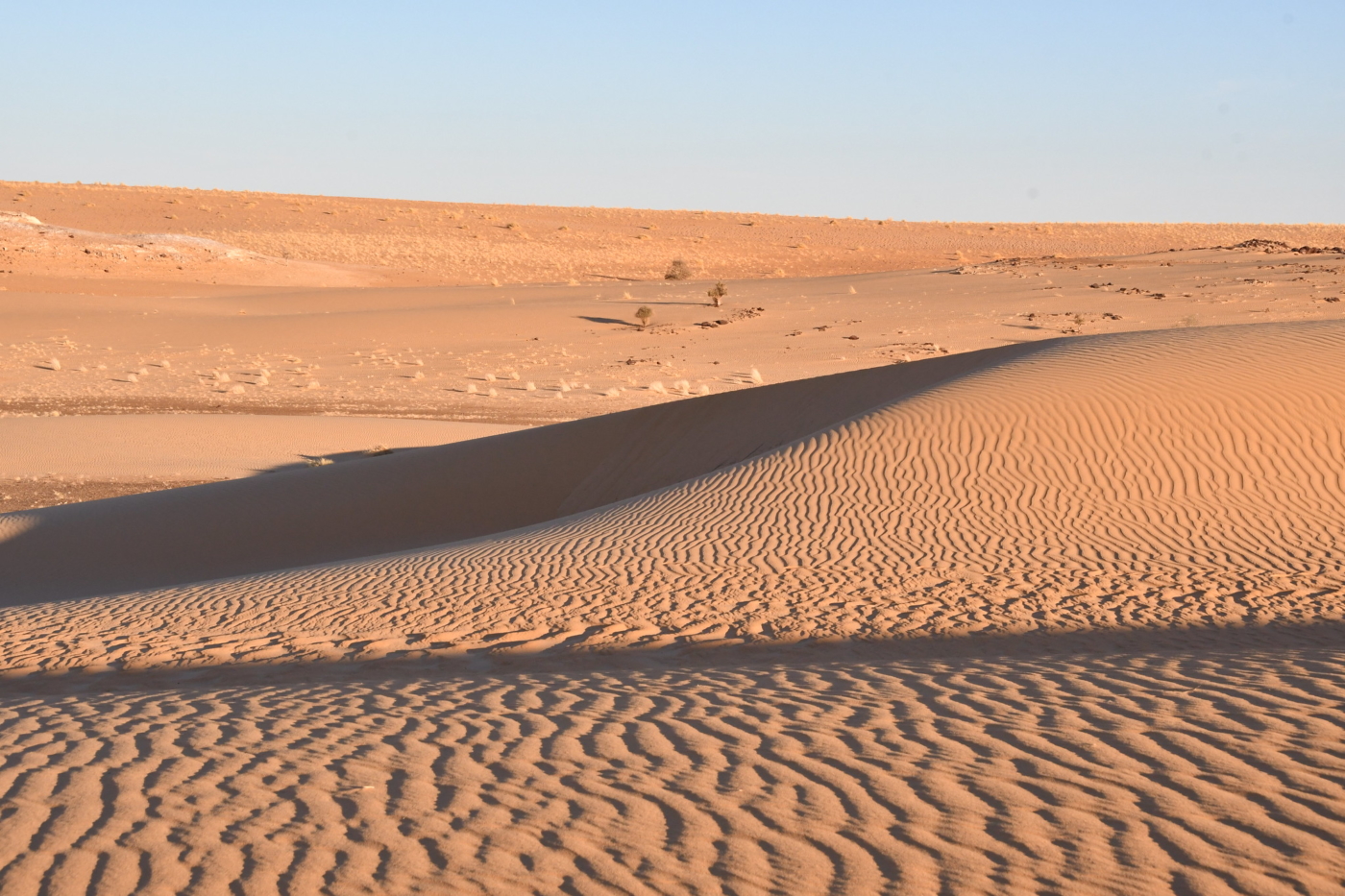A New Perspective On The Sahara

Titre H2
What I love about deserts is their uncluttered perfection. When the sand and dust have settled you can generally see what’s going on. The Sahara is one of those magical places where life in all its incredible diversity looks out unimpeded on the infinity of space. Ten million square kilometres of what some would have us believe is a barren, wasteland of scalding rock and sand. Sure, there’s plenty of that but it would be short-sighted to write off deserts as irrelevant to modern day society or conservation. Recent research has even shown that Saharan dust plays a significant role in the fertility of the Amazon basin. Lack of water does not mean lack of life but the presence of more exquisite forms of it. As the late defender of deserts and inveterate wilderness crusader, Edward Abbey wrote: ‘There is no shortage of water in the desert but exactly the right amount, a perfect ratio of water to rock, of water to sand, insuring that wide, free, open, generous spacing among plants and animals’. Exactly!
What the conservation community chooses to conserve is often a matter of perspective and personal preference, where far too often the qualitative is overlooked in favour of glamour or numbers. Are the desert ecosystems that maintain productive communities of highly adapted arid land plants and animals any less perfect and less valuable than those of coral reefs and rainforests? But it’s not just in the numbers game that areas such as the Sahara fall foul of richness based systems of selection, it is also often a matter of ignorance and lack of awareness. I always like to question professional conservation audiences about recent large mammal extinctions. To date not one has identified the poor old scimitar-horned oryx, last seen in the wild in the 1980s and listed as Extinct in the Wild on the IUCN Red List. Nor do they know about the other antelopes and gazelles on the brink of suffering the same demise. The addax and the dama and slender-horned gazelles are all down to global populations in the low hundreds. Although overhunting is by far the most important factor, a cocktail of secondary threats, including periodic drought, habitat encroachment and a chronic lack of resources for conservation, also contribute.
As elsewhere, successful conservation in deserts cannot be achieved without incentives or without the support of the governments and people with whom the wildlife and other natural resources live and fare for better or worse. Nor is the Sahara any different from other places beggared by warfare, corruption and lack of resources. It is blatantly obvious to the Sahara’s traditional land users that desert wildlife and the sparse, far-flung but productive ephemeral grasslands are important for their survival. Many recognize the role that wildlife plays in the fight against desertification and the germination and maintenance of plant communities. Others content themselves with more mystical but nonetheless powerful concepts. If there were no addax in the desert then why would Allah, in all His wisdom, bring rain to such desolate places? To paraphrase William Trogdon, it is all a matter of perspective: ‘To say nothing is here is incorrect; to say the desert is stingy with everything except space and light, stone and earth is closer to the truth’.